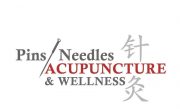Your First Visit
Acupuncture & Massage
Frequently Asked Questions
We understand this may be a new experience for you and will strive to make it a favorable one. We always encourage patients to ask questions and we will always do our best to answer them clearly and concisely.
Do you accept insurance?
We do accept insurance and are in-network with most major insurance plans for acupuncture but not for massage. We can, however, provide you with information to submit to your insurance for reimbursement.
To learn more about fees and insurance, click here
Are there any tips for my first time?
- Come well hydrated and nourished- having food and water before your treatment is important as we are helping the system go into a "Rest and Digest" state and providing the body with the proper tools will help you to receive the best from your treatment.
- What to wear- Something comfortable is always nice but we can easily work around whatever attire you wear. We understand you may be coming from work or heading out to an event after so working around clothing isn't a problem. That being said some patients do like to bring a change of clothes for their visit.
How long is each visit?
The initial acupuncture visit is scheduled for 90 minutes and follow-ups are scheduled at an hour. Massage visits can be 60 or 90 minutes.
How many treatments will I need?
Generally speaking, weekly visits are recommended but this can vary on a case-by-case basis. We always provide a treatment plan to suit a patient's specific needs during the first visit.
Can you get Acupuncture and Massage on the same day?
Yes.
Because acupuncture and massage are so different, people are often hesitant to combine the two, especially on the same day.
However, though they are different approaches, they have many of the same goals which is to help patients heal, relax, and improve their quality of life.
What’s the difference between Acupuncture and Dry Needling
Dry needling and traditional acupuncture share similarities, such as the use of thin needles and the insertion of needles into specific points. However, dry needling focuses on myofascial trigger points and musculoskeletal pain, while traditional acupuncture is based on balancing Qi and meridians.
